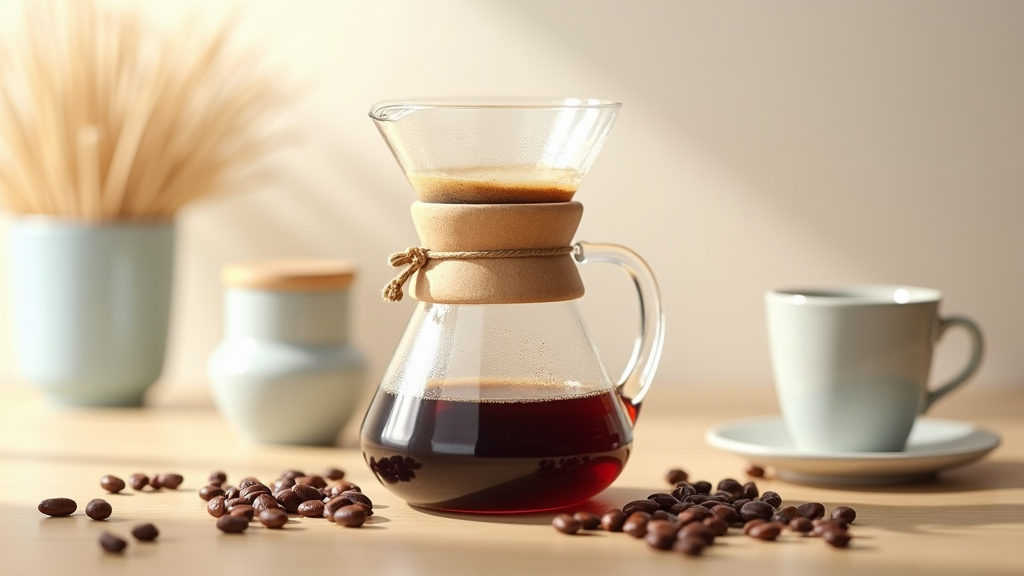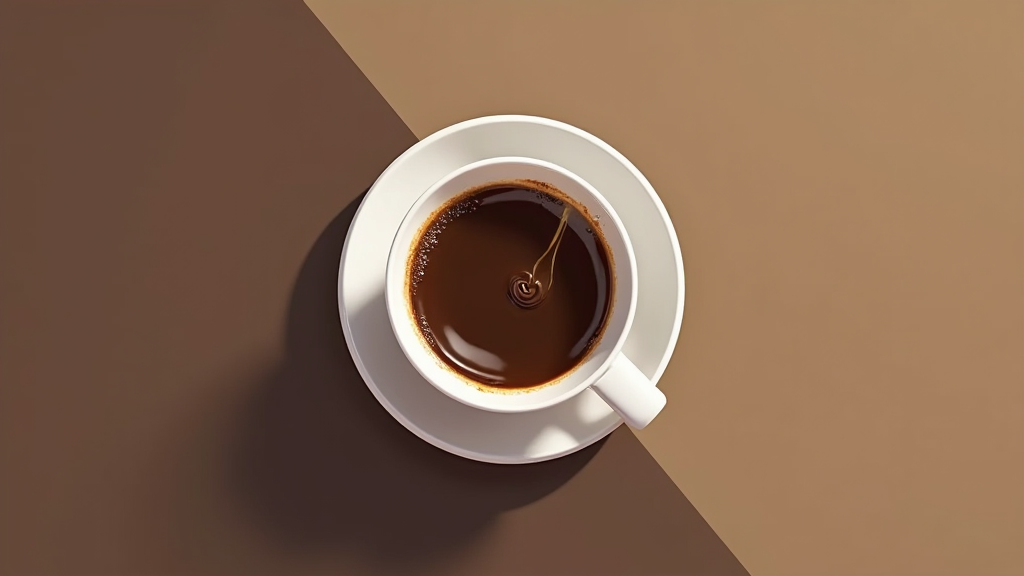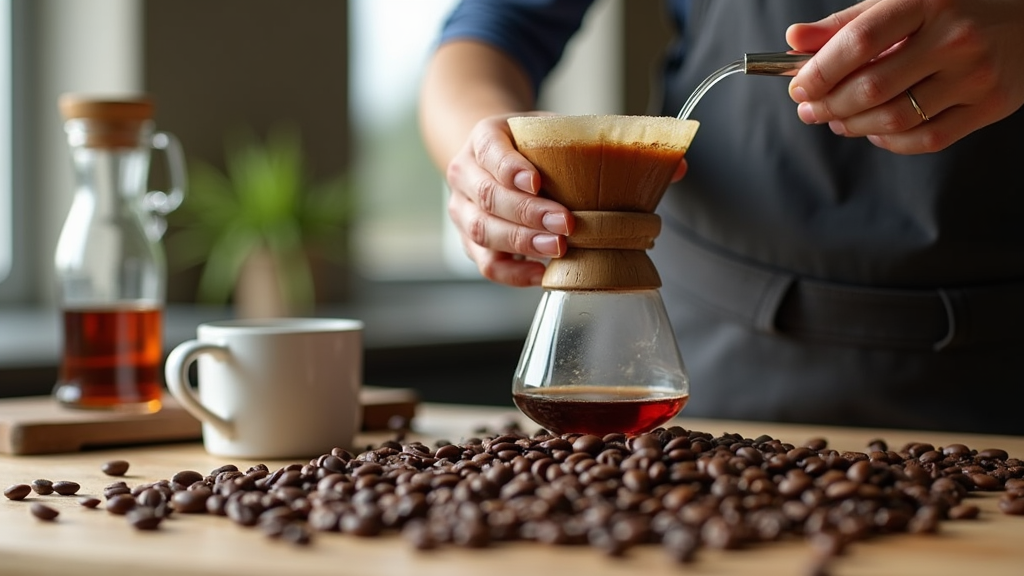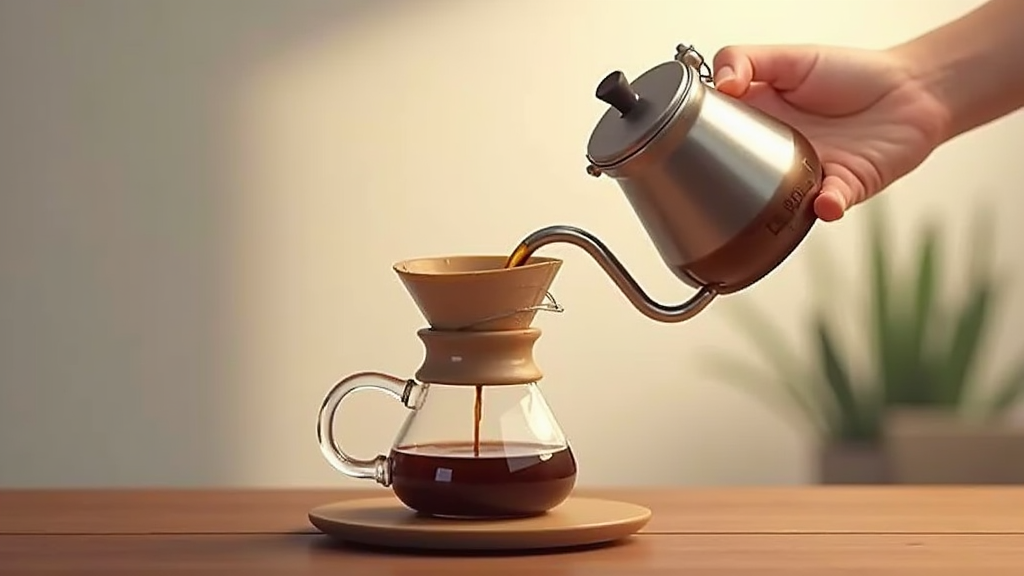Table of Contents
- How to Make Drip Coffee Taste Better: Your Guide
- Understanding How To Make Drip Coffee Taste Better
- Detailed Guide: Enhancing Drip Coffee Flavor
- Preparation: Materials for Better Drip Coffee
- Initial Setup: Preparing Your Drip Coffee Maker
- Essential Considerations: Achieving Optimal Drip Coffee
- Step-by-Step: Brewing Delicious Drip Coffee
- Best Practices: Refining Your Drip Coffee Technique
- Common Mistakes: Avoiding Drip Coffee Pitfalls
- Advanced Techniques: Elevating Drip Coffee Quality
- Optimization: Fine-Tuning Your Drip Coffee Recipe
- Troubleshooting: Solving Drip Coffee Problems
- How to Make Drip Coffee Taste Better: Flavor Enhancement
- Exploring Alternative Brewing Methods for Better Coffee
- How to Improve Drip Coffee: Maintenance for Best Flavor
- How to Improve Drip Coffee: A Taste Outline Conclusion
How to Make Drip Coffee Taste Better: Your Guide

Drip Coffee’s Popularity and Flavor Improvement
Drip coffee is a daily staple for many, yet its flavor often leaves something to be desired. Over 50% of Americans enjoy coffee every day, and drip coffee machines are a popular brewing choice. However, with a few simple adjustments, your daily cup can be transformed from ordinary to extraordinary.
Brief History of Drip Coffee Methods
Drip coffee has evolved significantly from early percolation methods. Historically, coffee brewing was a more involved process, but drip coffee simplified it. Recent advancements emphasize the importance of bean quality, consistent grinding, and pure water for optimal flavor extraction.
Core Concepts for Delicious Drip Coffee Outline
This guide will provide you with the core concepts needed to brew exceptional drip coffee. You’ll learn about extraction, grind size, and water temperature. We’ll also cover practical applications with a step-by-step guide to significantly improve your drip coffee experience.
Understanding How To Make Drip Coffee Taste Better
Key Definitions for Better Drip Coffee Extraction
Extraction is the process where water dissolves coffee solubles, creating the beverage we enjoy. Grind size refers to the particle size of the ground coffee, influencing how quickly extraction occurs.
Core Principles for Enhancing Drip Coffee Flavor
Balancing extraction is essential for optimal flavor. Avoid under-extraction, which results in sour, weak coffee, and over-extraction, which leads to bitter, harsh coffee.
Essential Components for Drip Coffee Excellence
To make great drip coffee, you’ll need coffee beans (whole or pre-ground), a drip coffee maker, coffee filters (paper or metal), filtered water, and ideally, a burr grinder.
Primary Aspects of Drip Coffee Quality
Bean quality and freshness are paramount. Grind consistency ensures even extraction, and precise water temperature control is crucial for optimal flavor development.
Secondary Factors Affecting Drip Coffee Taste
The coffee-to-water ratio impacts strength and flavor. The filter type influences the coffee’s body, and machine cleanliness prevents unwanted flavors.
Variations in Coffee Beans and Drip Machines
Explore different coffee bean origins, such as single-origin vs. blends, to discover your preferred flavor profiles. Consider different drip machine models, like programmable or pour-over capable options, for added control.
Detailed Guide: Enhancing Drip Coffee Flavor

Preparation: Materials for Better Drip Coffee
To significantly improve your drip coffee, gather these essential materials:
- Fresh coffee beans (medium roast Arabica recommended)
- Burr grinder for consistent grind size
- Quality drip coffee maker (Calphalon Special Brew, Ninja Specialty CM401, or Hamilton Beach 12-cup Programmable)
- Paper filters to remove sediment
- Filtered water (Berkey filter recommended for purity)
- Measuring spoons or a precise kitchen scale
Initial Setup: Preparing Your Drip Coffee Maker
Proper setup is key. Start by:
- Cleaning the coffee maker with a vinegar and water solution (1:1 ratio) to remove mineral buildup.
- Pre-wetting the paper filter with hot water to eliminate any papery taste.
Essential Considerations: Achieving Optimal Drip Coffee
Keep these points in mind for the best results:
- Bean freshness is paramount; use beans within 2 weeks of roasting.
- Water quality dramatically affects taste; filtered water is crucial.
- Ensure your work area is clean and dry for a seamless process.
Step-by-Step: Brewing Delicious Drip Coffee
Follow these clear instructions for brewing:
Best Practices: Refining Your Drip Coffee Technique
Implement these practices for consistently excellent coffee:
- Grind beans immediately before brewing to maximize flavor.
- Use a kitchen scale for precise coffee-to-water ratios, ensuring consistency.
- Ensure water temperature is between 195°F and 205°F (90°C to 96°C) for optimal extraction.
Common Mistakes: Avoiding Drip Coffee Pitfalls
Avoid these common errors to prevent a subpar brew:
- Using stale or pre-ground coffee, which loses its aroma and flavor quickly.
- Overfilling the filter with coffee, which can lead to uneven extraction.
- Allowing the coffee to sit on the hot plate for extended periods, causing it to become bitter.
Advanced Techniques: Elevating Drip Coffee Quality
For the coffee enthusiast, consider these expert tips:
- Experiment with different coffee bean origins and roast levels to discover your preferences.
- Try a 1:15 or 1:16 coffee-to-water ratio (e.g., 30g coffee to 450g water) for a balanced brew.
- Consider using a gooseneck kettle for manual pour-over brewing to control water flow and saturation.
Optimization: Fine-Tuning Your Drip Coffee Recipe
Adjust these elements to perfect your coffee:
- Adjust grind size based on taste: finer for under-extraction (sour), coarser for over-extraction (bitter).
- Use a timer to monitor brewing time and adjust accordingly for consistent results.
- Add a pinch of salt to the grounds to reduce bitterness (optional), enhancing sweetness and flavor.
Troubleshooting: Solving Drip Coffee Problems
Address these common issues:
- Weak, acidic coffee: Use a finer grind or increase the amount of coffee.
- Bitter coffee: Use a coarser grind or decrease the amount of coffee.
- Muddy coffee: Reduce the amount of fines in the grind or use a higher-quality paper filter.
How to Make Drip Coffee Taste Better: Flavor Enhancement
Selecting Coffee Beans to Make Drip Coffee Better
Choosing the right coffee beans is crucial for enhancing the flavor of your drip coffee. Different beans offer unique characteristics that can dramatically impact the final cup.
- Single-Origin vs. Blends:Single-origin beans showcase the distinct flavor profiles of their specific growing region, offering a unique tasting experience. Blends combine different beans to achieve a balanced and consistent taste.
- Roast Levels:Light roasts highlight the original flavors and acidity of the bean. Medium roasts provide a balance of flavor, acidity, and body. Dark roasts offer a robust, bold, and sometimes smoky flavor.
- Bean Storage:Store your beans in an airtight container away from light, moisture, and heat to preserve their freshness. Vacuum-sealing is an excellent option for long-term storage.
Water Quality Impacts on Drip Coffee Taste
The quality of water you use significantly affects the taste of your drip coffee. Impurities and improper temperature can negatively impact the flavor extraction.
- Water Filtration:Use filtered or bottled water to avoid impurities and chlorine, which can negatively affect the taste. A water filter pitcher or a whole-house filtration system can improve water quality.
- Temperature Control:The ideal brewing temperature is between 195°F and 205°F (90°C to 96°C). Use a thermometer to verify the temperature if your drip coffee machine lacks precise control.
Adding Flavor Enhancements to Improve Drip Coffee
Experimenting with additional flavor enhancements can elevate your drip coffee experience and create unique flavor profiles.
- Spices and Extracts:Add spices like cinnamon or nutmeg, or extracts like vanilla, to the coffee grounds before brewing for a subtle flavor infusion. Use small amounts to avoid overpowering the coffee.
- Creamers and Sweeteners:Use dairy or non-dairy alternatives such as whole milk, almond milk, or oat milk to add richness. Sweeten with sugar, honey, or agave nectar to taste, complementing the coffee’s natural flavors.
Exploring Alternative Brewing Methods for Better Coffee

Pour-Over Technique for Enhanced Coffee Flavor Control
The pour-over method offers significantly more control over the brewing process compared to drip coffee makers, allowing for a more nuanced and flavorful cup. This technique gives you command over water temperature, flow rate, and saturation, all critical factors in extraction.
- Benefits:Greater control leads to optimized extraction and a cleaner, brighter cup.
- Equipment:You’ll need a pour-over dripper (such as the Hario V60, Chemex, or Kalita Wave), a gooseneck kettle for precise pouring, and paper filters specific to your chosen dripper.
- Process:Start by wetting the filter to eliminate paper taste. Then, slowly and deliberately pour hot water (around 200°F) over the coffee grounds in a circular motion, ensuring even saturation. Allow the coffee to bloom for 30 seconds before continuing to pour in stages.
Cold Brew Method for Smoother, Less Acidic Coffee
Cold brew is an excellent alternative for those who prefer a smoother, less acidic coffee experience. This method involves steeping coffee grounds in cold water for an extended period, resulting in a concentrate that can be diluted to your desired strength.
- Benefits:Cold brew is naturally sweeter and less bitter than hot-brewed coffee, making it easier on the stomach.
- Process:Combine coarsely ground coffee with cold, filtered water in a large container. Stir gently to ensure all grounds are saturated. Cover and refrigerate for 12-24 hours. After steeping, strain the mixture through a cheesecloth or fine-mesh sieve.
- Ratio:A common ratio is 1 part coffee to 4 parts water, but you can adjust this to suit your taste.
How to Improve Drip Coffee: Maintenance for Best Flavor
Regular Cleaning for Drip Coffee Maker Longevity
Maintaining a clean coffee maker is crucial for brewing consistently delicious coffee. Residue buildup can negatively impact the taste, so regular cleaning is essential.
- Removable Parts: Wash the carafe, filter basket, and water reservoir with warm, soapy water after each use. This prevents oils and coffee grounds from accumulating and affecting future brews.
Removable Parts: Wash the carafe, filter basket, and water reservoir with warm, soapy water after each use. This prevents oils and coffee grounds from accumulating and affecting future brews.
Descaling Your Drip Coffee Machine for Optimal Taste
Mineral buildup from hard water can significantly affect your coffee maker’s performance and the taste of your coffee. Descaling regularly removes these deposits.
- Descale your coffee maker monthly using a vinegar solution. Mix equal parts white vinegar and water.
- Run a full brewing cycle with the vinegar solution. Afterward, rinse the coffee maker thoroughly with clean water, running several cycles to remove any vinegar residue.
Descale your coffee maker monthly using a vinegar solution. Mix equal parts white vinegar and water.
Run a full brewing cycle with the vinegar solution. Afterward, rinse the coffee maker thoroughly with clean water, running several cycles to remove any vinegar residue.
Choosing the Right Filter to Make Drip Coffee Taste Better
The type of filter you use can impact the final taste of your drip coffee. Consider the pros and cons of each type to find the best fit for your preferences.
- Paper Filters: These filters offer a smoother, cleaner taste by removing more particulates and oils from the coffee.
- Pre-wetting the paper filter before brewing helps eliminate any papery taste that might otherwise transfer to your coffee.
- Metal Filters: These reusable filters are environmentally friendly and allow more oils and sediment to pass through into the coffee.
- Coffee brewed with metal filters often has a richer, fuller body but may also contain more sediment.
Paper Filters: These filters offer a smoother, cleaner taste by removing more particulates and oils from the coffee.
Pre-wetting the paper filter before brewing helps eliminate any papery taste that might otherwise transfer to your coffee.
Metal Filters: These reusable filters are environmentally friendly and allow more oils and sediment to pass through into the coffee.
Coffee brewed with metal filters often has a richer, fuller body but may also contain more sediment.
How to Improve Drip Coffee: A Taste Outline Conclusion

Recap: Essential Steps for Better Drip Coffee
In summary, achieving a superior cup of drip coffee comes down to a few critical factors. Start with high-quality, freshly roasted coffee beans. Ensure your grind size is appropriate for drip coffee, aiming for a medium-coarse consistency. Use filtered, clean water at the correct temperature (around 200°F). These foundational elements are non-negotiable for a delicious brew.
Maintaining Equipment: Improving Drip Coffee Taste Outline
Beyond the basics, regular maintenance of your drip coffee maker is crucial. Descale your machine periodically to remove mineral buildup that can negatively impact taste. Experiment with different coffee-to-water ratios to find your perfect balance. Small adjustments can lead to significant improvements in your final cup.
Final Thoughts: Enjoying Drip Coffee Perfection Journey
The journey to perfecting your drip coffee brewing technique is a rewarding one. Don’t be afraid to experiment and adjust your methods to suit your taste preferences. The most important thing is to enjoy the process and savor the delicious results.
Share Your Drip Coffee Brewing Outline Experiences
We encourage you to share your own tips, tricks, and experiences with brewing better drip coffee in the comments below. What are your go-to methods for achieving the perfect cup? Let’s learn from each other and elevate the art of drip coffee together!

